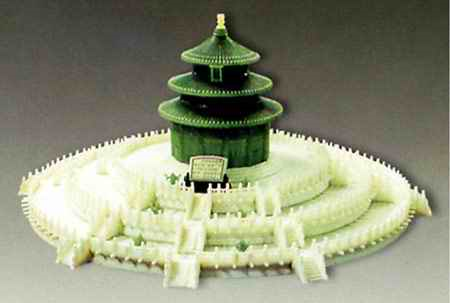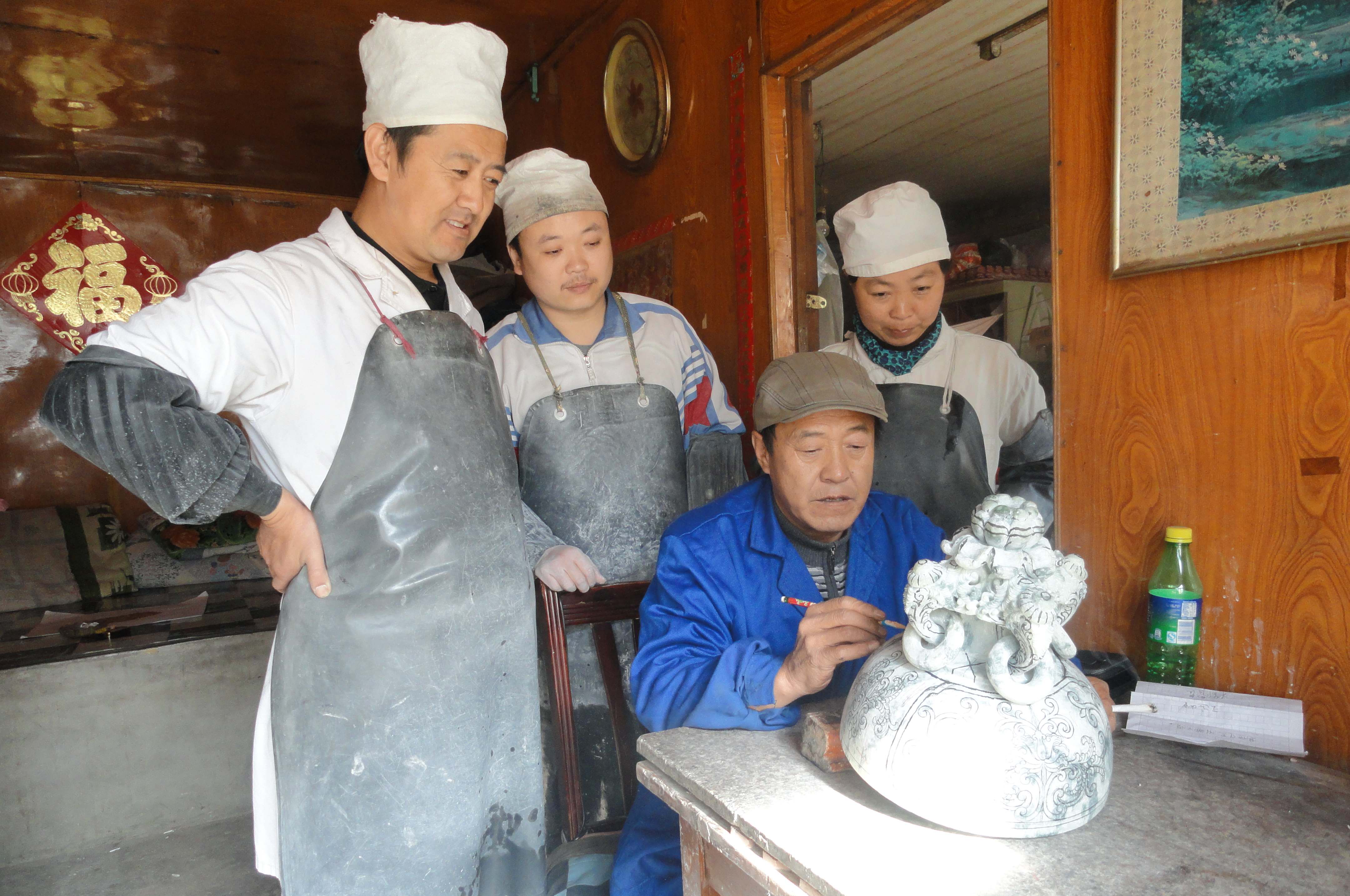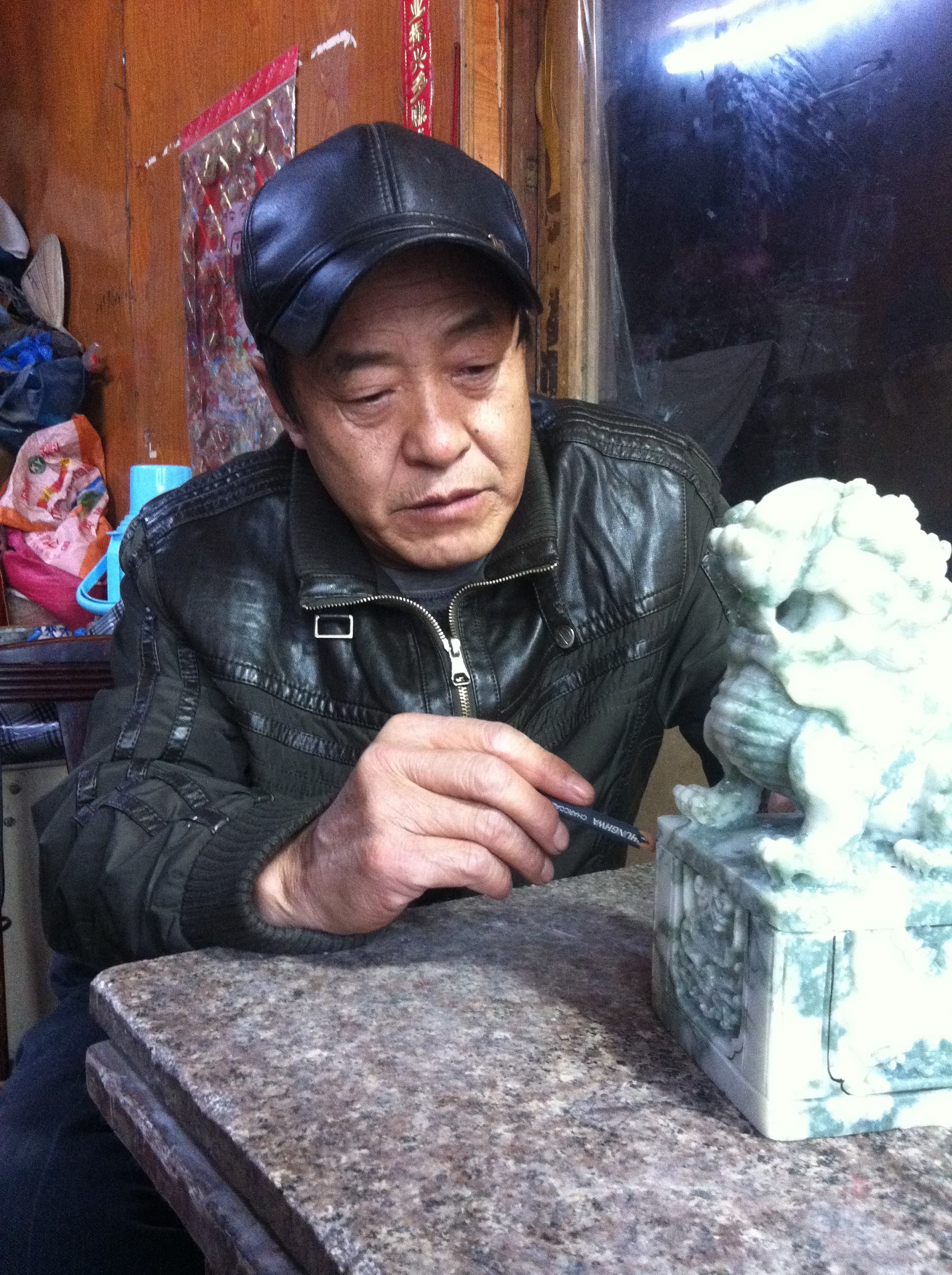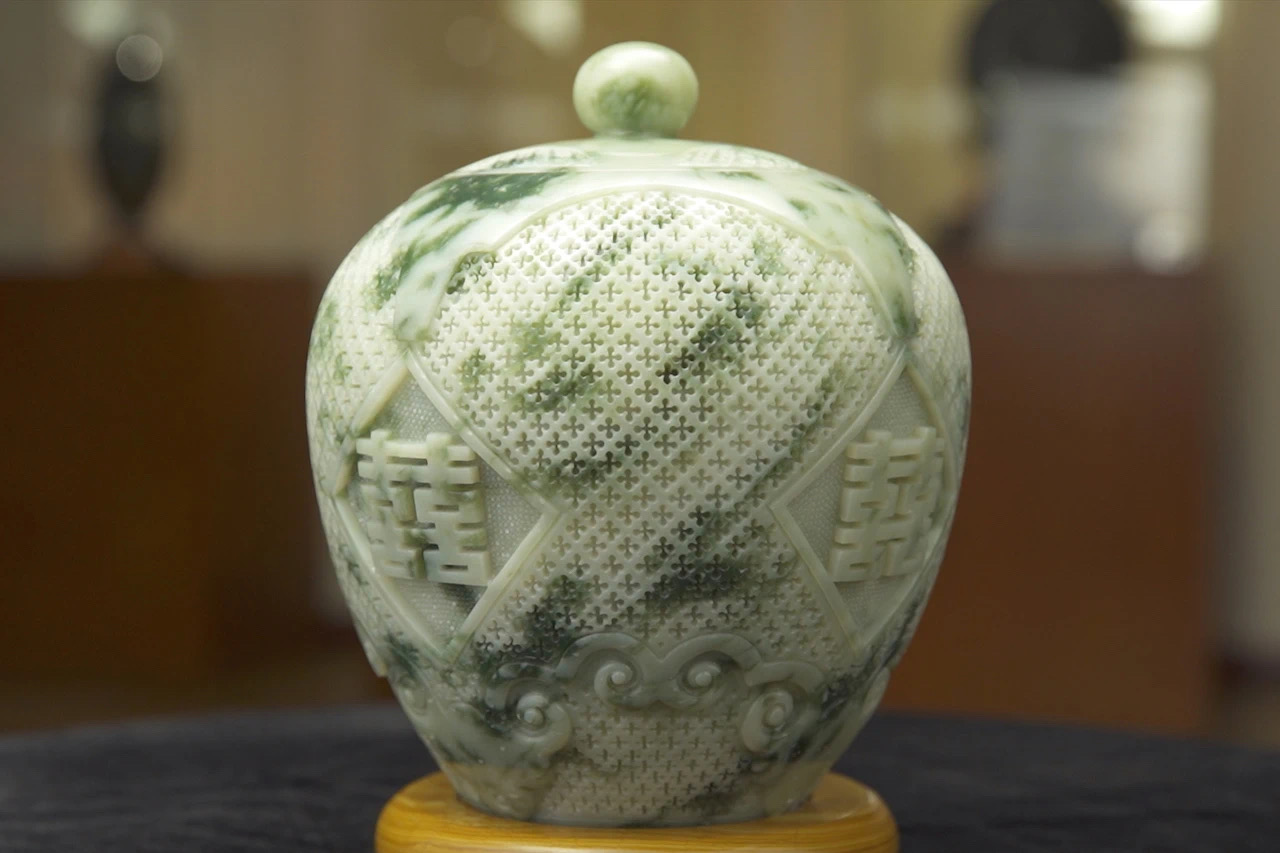The Xiuyan Manchu Autonomous County in Liaoning Province is located in an area with rolling hills and intersecting rivers. The Qianshan Mountain enters the northern part of Xiuyan and extends to the southwest and southeast, forming a natural barrier that surrounds the northern, western, and eastern boundaries of Xiuyan. More than five hundred streams meander through the interlacing valleys, converging into thirteen tributaries and the two main rivers of the Dayang River and the Shaozi River. Xiuyan jade originates from lush mountains and limpid rivers.
There are various kinds of Xiuyan jade in Liaoning. According to its shape and color, people roughly classify Xiuyan jade into Jiacui jade, Huayu jade, Xiuyu jade, Laoyu jade, Hemo jade, and so forth.
Xiuyan jade sculpture emerged during the Qianlong reign of the Qing Dynasty (1736-1796 A.D.) and gradually flourished during the reigns of Emperor Daoguang and Emperor Xianfeng in the Qing Dynasty (1821-1861 A.D.). By the end of the Qing Dynasty and the beginning of the Republic of China, Xiuyan had had a “Jade Street” with over three hundred professional carvers. There were “Eight Outstanding Jade Carvers” with Jiang Baotang as the representative and two master carvers of suhuo (suhuo jade carving, or jade carvings of display vessels) surnamed Li, with Li Dechun as the representative. Xiuyan jade sculpture mainly includes four major types: suhuo, figures, flowers and birds, and animals, among which suhuo is the most representative of the craftsmanship and characteristics of Xiuyan jade sculpture. Suhuo, a term used in the jade sculpture industry, means carving ancient display vessels such as censers, vases, Dings (sacrificial cauldrons), incense burners, and pots. These shapes are mainly inspired by the bronze vessels before the Qin and Han Dynasties. Xiuyan’s suhuo inherits the essence of traditional Chinese jade sculpture techniques. It is so difficult to master that even experts in this industry express admiration.

Suhuo is particular about materials, time-consuming, material-consuming, and complex in craftsmanship, which discouraged many carvers. To make things worse, suhuo was not popular in the market at first. Therefore, many carvers turned to make miscellaneous items and this technique had once been on the verge of being lost. People did not realize the value and vitality of suhuo of Xiuyan jade sculpture until the beginning of the 20th century when Wang Yunxiu, a master of suhuo of Xiuyan jade sculpture and a representative inheritor of national intangible cultural heritage, won the Tiangong Prize with his work “the Hall of Prayer for Good Harvest”. It amazed people with its exquisite craftsmanship. From then on, various jade sculpture awards began to pour in.

In 2006, Xiuyan jade sculpture was included on the first series of national intangible cultural heritage list. Suhuo, as the most representative technique, also attracted widespread attention. In 2013, Wang Yunxiu raised funds on his own to establish a Xiuyan jade sculpture inheritance base in the east of the Xiuyan Manchu Autonomous County. It took a year to finish building this base. It covers an area of more than 3,000 square meters and is furnished with full facilities like exhibition halls, studios, teaching and research rooms, dormitories, and canteens. It can also accommodate non-local students. In the first year, apprentices have no salary, but they are provided with free food and accommodation. From the second year onwards, their salaries vary with the excellence levels of their individual skills. Those with better techniques and finer craftsmanship naturally earn a higher income. “Motivated by this incentive mechanism, these young people make rapid progress in improving their skills.”


He has more than thirty apprentices, whose incomes range from a minimum of 3,000 yuan to a maximum of 5,000 yuan per month. “My long-cherished wish has finally been fulfilled now that suhuo has qualified successors and inheritors”, said Wang Yunxiu.
Today, the influence and popularity of Xiuyan jade sculpture are continuously expanding.
